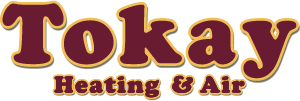
To combat increasing energy expenses and embrace sustainability, many homeowners are looking for ways to enjoy the same standards of comfort while reducing utility bills. As part of the Inflation Reduction Act, federal tax credits are available for energy-efficient home upgrades, especially HVAC systems like air conditioners. These credits offer big savings, provided that homeowners use eligible equipment and submit the right paperwork.
If you’re concerned the application process might be tedious, we can share something that will help! Tokay hopes this guide will give you what you need to secure 2024’s HVAC tax credits. Here’s how.
How Do These Tax Credits Work?
These valuable tax credits for boosting your home’s energy efficiency are just one goal of the recent Inflation Reduction Act. With the higher cost of energy making an impact, helping more homeowners upgrade their equipment is always beneficial. The key provision of these credits is to reduce the cost of installing high efficiency upgrades. The two we’ll cover are the Energy Efficiency Home Improvement Credit and the Residential Clean Energy Credit.
Don’t forget, in order to earn any of the credits, you’ll have to complete IRS Form 5695. Additionally, this form has to be submitted within the same tax year your upgrades were installed, not bought.
Maximizing Savings with the Energy Efficiency Home Improvement Credit
Through 2032, the Energy Efficiency Home Improvement Credit provides up to $3,200 annually for installing higher efficiency home upgrades. This can be up to 30% of the total project’s cost. You should be aware that in order to receive the maximum amount, it means making severel investments. For example, you’ll get up to $2,000 for a new, high-efficiency heat pump. This can be paired with an additional $1,200 in credits for more projects in the tax year.
While heat pumps are a great use of the program, other HVAC upgrades like efficient furnaces and air conditioners also qualify. It will help to confirm that your choice’s energy efficiency rating is sufficient to qualify.
Exploring the Residential Clean Energy Credit
The Residential Clean Energy Credit offers 30% savings on a wide range of residential clean energy efficiency projects. Eligibility is restricted to homeowners seeking to update existing or newly constructed homes. While the Home Improvement Credit focuses on utilities and HVAC systems, this credit targets renewable energy sources like solar and wind energy.
Some key details of this tax credit include requiring the installation project to be finished between 2022 and 2032. But at the same time, homeowners can use any excess credit to reduce taxes in future years. This is a great way to make things a little easier when investing in renewables.
Additional Qualifications for Energy Tax Credits
Because HVAC systems are one of the major reasons for high energy bills, these tax credits incentivize the most energy-efficient options. But home energy efficiency can be improved in lots of other ways. Apart from the previously listed HVAC upgrades, {you could also choose|other eligible items include|you also have access to:
- Energy-saving heat pump water heating systems
- Modern electrical panel improvements
- New electrical wiring
- Insulation, air sealing and ventilation enhancements
- Energy-efficient cooking appliances like stoves, cooktops, and ovens
- Heat pump clothes dryers
- Water boilers
Just like with installing one or more HVAC systems, you’ll need to verify that your chosen products meet the eligible energy efficiency ratings.
Maximizing Your 2024 HVAC Tax Credits: Top 3 Tips
While any one of those upgrades can improve your home’s energy efficiency, some planning ahead will ensure the best chance at more long-term benefits. Maximize your HVAC tax credits with these three tips:
- Perform an energy audit to pinpoint valuable enhancements. Rely on professional HVAC assessments for crucial advice.
- Enhance your home's envelope by addressing inefficient windows and doors.
- Explore potential rebates from utility companies for clean energy upgrades. Renewable sources like solar, wind, and geothermal contribute to community power grid sustainability.
- Don’t forget financing options from local service companies, which can help reduce costs even more.
Secure Your 2024 HVAC Credits with Help from Tokay
Partner with local HVAC professionals like Tokay for help with home energy audits and new installation projects. Our helpful installers can deliver whatever you need for a more energy-efficient home.
